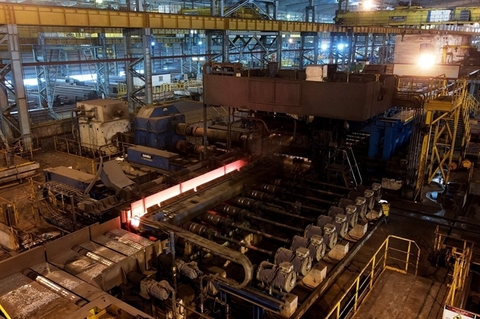Local steel sector saw gloomy performance in 11 months
Local steel sector saw gloomy performance in 11 months
The local steel market continued to be gloomy, with reductions seen in both production and consumption in the past 11 months, a report published by the Viet Nam Steel Association (VSA) this week revealed.

In November alone, production of finished steel reached over 1.82 million tonnes, down 11 per cent month-on-month and 37 per cent year-on-year while consumption of all kinds of steel hit above 1.94 million tonnes, up 3 per cent month-on-month but down 16.2 per cent year-on-year.
In the 11-month period, finished steel production saw a yearly decline of 11.3 per cent to 27.12 million tonnes. Sales of finished steel also plunged 7 per cent year-on-year to 25.1 million tonnes, according to the report.
In terms of exports, 6.99 million tonnes of steel were shipped abroad in the past 10 months, earning a turnover of more than $6.94 billion. These figures marked significant yearly decreases of 57 per cent in volume and 29 per cent in value.
Among the main export markets of Vietnamese steel, the ASEAN bloc, accounted for 42.2 per cent of the total, the EU (16.92 per cent), the US (7.71 per cent), South Korea (5.9 per cent) and Hong Kong (5.67 per cent).
In a 10-month period, Viet Nam also imported about 9.76 million tonnes of steel with a value of more than $10.29 billion, down 8.4 per cent in volume but up 7 per cent in value over the same period of last year. Major steel suppliers to Viet Nam were mainland China, Japan, South Korea, Taiwan and India.
VnEconomy cited Viet Nam Steel Corporation as saying that domestic demand for steel remained low. Sluggish consumption and high inventories caused factories to reduce their production capacities or halt production.
According to the company, the prospect of recovering global steel demand continued to face difficulties when inflation was high. Moreover, the implementation of tight monetary policy in many countries would affect the prospect of world economic recovery in December.
Meanwhile, the domestic market had not shown any clear signs of recovery and the real estate market faced many challenges. That would have a great influence on the consumption of the steel industry.
All businesses were looking for ways to restore output and improve profit results in the last month of 2022, resulting in fiercer competition among factories and pushing up the selling prices of steel.
In the recent report on the prospects of the steel industry, RongViet Securities Corp also said that the sector had little chance to recover in 2023 due to weak consumption, the pressure of the exchange rate and interest rate on financial costs.
In 2023, the Government would foster investment in infrastructure projects with the goal of ensuring economic growth that could support domestic steel demand, especially for construction steel.
However, the real estate industry which might not recover after a gloomy year could not help domestic steel demand rebound next year, experts have said.




















